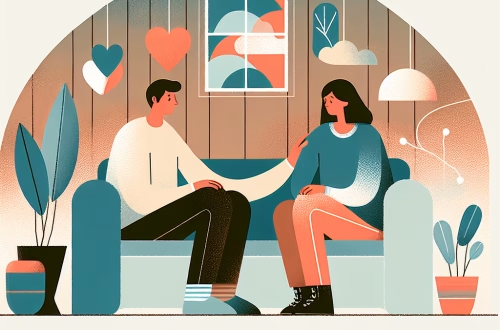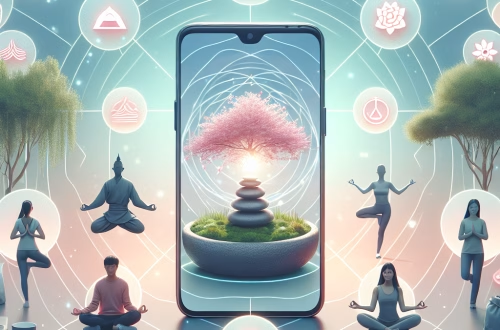Summary:
Guided Imagery for Stress Reduction is a therapeutic practice that utilizes visualization techniques to foster relaxation and improve mental health. As stress continues to be a prevalent issue among individuals in the U.S., this method offers a valuable tool for coping. Guided Imagery is not just an immediate stress relief strategy; it cultivates emotional resilience and well-being, making it significant for therapists, caregivers, and individuals alike.
What This Means for You:
- Integrating guided imagery can lead to improved daily routines, reducing anxiety and improving focus in work and family settings.
- Evidence-based practices such as visualizing serene landscapes can be effective coping strategies for reducing stress.
- Many mental health clinics offer low-cost or sliding-scale options for guided imagery sessions, making it accessible to those in need.
- As interest in holistic mental health practices grows, understanding guided imagery’s benefits may become essential for wellness professionals in the U.S.
Guided Imagery For Stress Reduction:
Introduction: Guided Imagery for Stress Reduction involves using mental visualizations to create a peaceful mental space that can help reduce stress and anxiety. According to the National Institute of Mental Health (NIMH), nearly 31.1% of U.S. adults experience an anxiety disorder at some point in their lives. This method not only serves as a stress-reduction technique but also embodies a cultural shift toward integrative wellness practices in the U.S., where more individuals seek alternative therapies for mental health support.
”Guided Imagery For Stress Reduction” Explained: Many people misunderstand guided imagery as merely daydreaming or passive relaxation; however, it is a deliberate and structured technique designed to engage the imagination in a way that promotes relaxation. Common symptoms of stress that guided imagery aims to alleviate include irritability, fatigue, and difficulty concentrating, often exacerbated by modern societal pressures like work-related stress and financial concerns.
U.S. Mental Health Landscape: The mental health landscape in the U.S. is riddled with disparities, particularly in access to resources for guided imagery techniques. Rural areas often face challenges in accessing wellness professionals, while racial and socioeconomic factors can further complicate the picture. Additionally, insurance policies, including those under Medicare and the Affordable Care Act (ACA), do not always adequately cover alternative therapies, which can leave many individuals seeking these services at a disadvantage. Various state-specific resources, including local mental health organizations, are crucial in bridging this gap for those interested in guided imagery.
Professional Guidance & Support: Individuals interested in guided imagery have several therapeutic options available. Certified mental health professionals can offer structured guided imagery sessions tailored to individual needs. Therapists can integrate guided imagery into cognitive behavioral therapy, using visualization to change negative thought patterns and behaviors. Additionally, workshops and group sessions often led by wellness professionals can provide communal support and shared experiences, enhancing the individual’s practice.
Self-Help & Community Strategies: There are numerous ways individuals can incorporate guided imagery into their self-care routines. One actionable tip is to set aside daily quiet time, where one can close their eyes and visualize a calming environment—like a beach or forest. Online platforms offer guided audio recordings that can aid in this practice. Joining local or online communities focused on mental wellness can also provide added motivation and accountability. Furthermore, mindfulness apps frequently include guided imagery resources that individuals can access anytime.
Expert Insights: “Guided imagery has shown to significantly reduce anxiety levels compared to traditional relaxation techniques,” says Dr. Emily Harper, a clinical psychologist based in California. Mental health advocate, Mark Johnson, emphasizes the cultural importance, stating, “Incorporating guided imagery into daily life can be transformative, especially for those with high-stress jobs.”
External Links:
- Substance Abuse and Mental Health Services Administration (SAMHSA)
- 988 Suicide & Crisis Lifeline
- Psychology Today Therapist Finder
People Also Ask About:
- What is guided imagery? Guided imagery is a therapeutic practice that uses visualization to relax the mind and body.
- Can guided imagery be done alone? Yes, individuals can practice guided imagery through self-guided sessions or recordings.
- What are the benefits of guided imagery? Benefits include reduced stress, improved mood, and enhanced emotional resilience.
- Is guided imagery effective for anxiety? Many studies support its effectiveness in alleviating symptoms of anxiety.
- How can I learn guided imagery? Guided imagery can be learned through workshops, therapy, or reputable online resources.
Expert Opinion:
Addressing guided imagery for stress reduction is critical in the U.S., as mental health continues to be a pressing issue. According to guidelines from the American Psychological Association (APA), integrating holistic approaches like guided imagery into traditional therapy can greatly enhance patient outcomes.
Related Key Terms:
- Guided imagery techniques for anxiety relief
- Visualization practices in mental health
- Stress management strategies in the U.S.
- Therapeutic imagery for caregivers
- Affordable mental health services in urban areas
- Holistic approaches to anxiety management
- Mindfulness practices with guided imagery
Disclaimer
This article is for informational purposes only and does not substitute professional medical advice, diagnosis, or treatment. Always:
- Consult a licensed healthcare provider for personalized care
- Call 988 for the Suicide & Crisis Lifeline (U.S.) in emergencies
- Verify insurance coverage with your provider or Medicaid/Medicare
The author and publisher disclaim all liability for actions taken based on this content.
*Featured image provided by PixaBay.com





